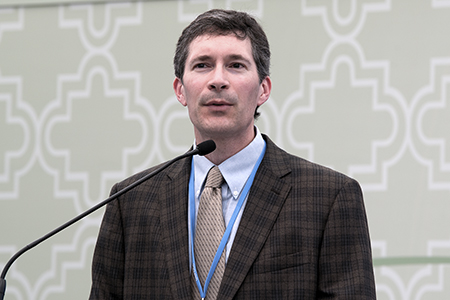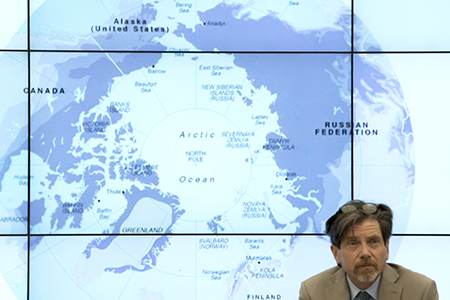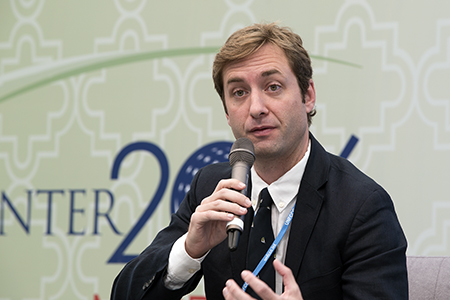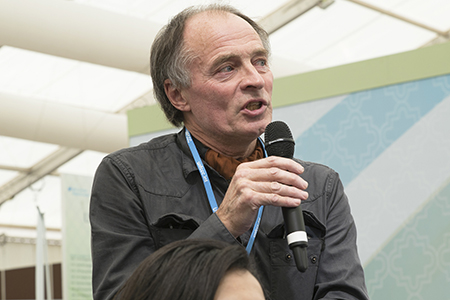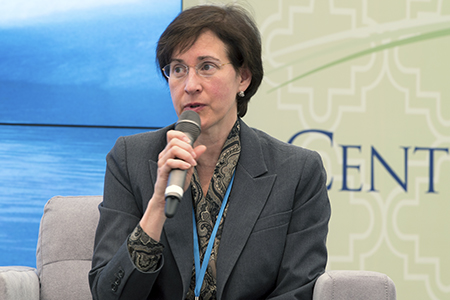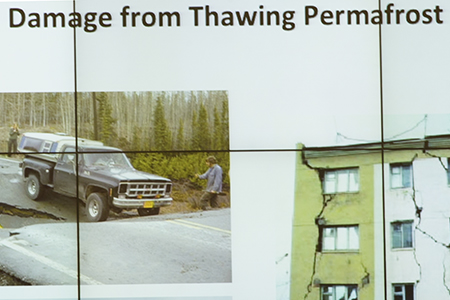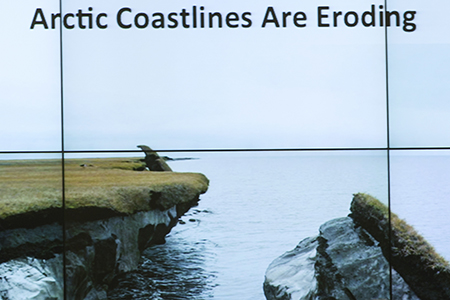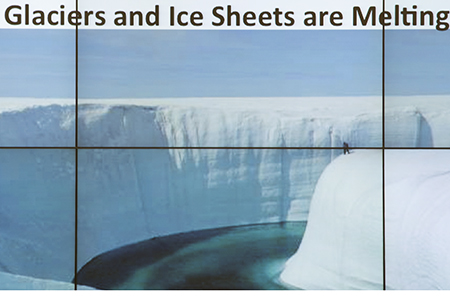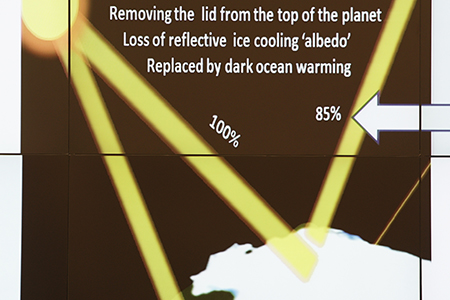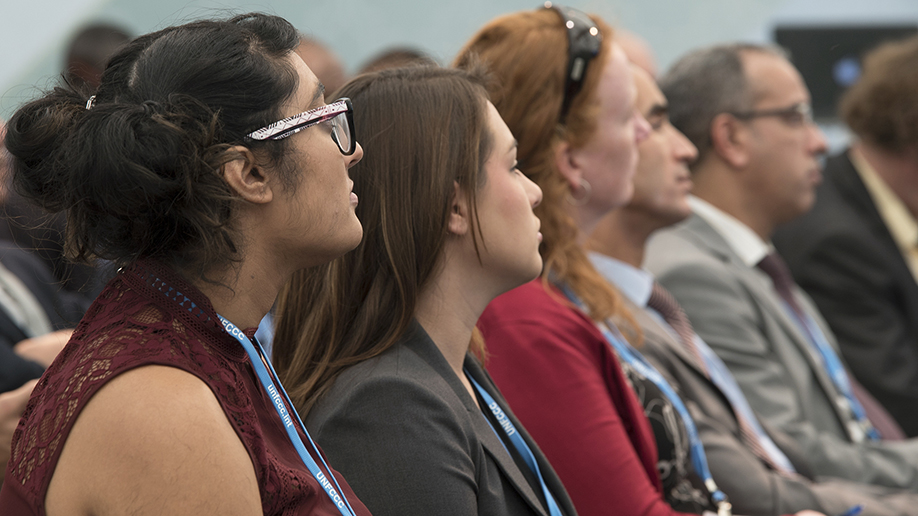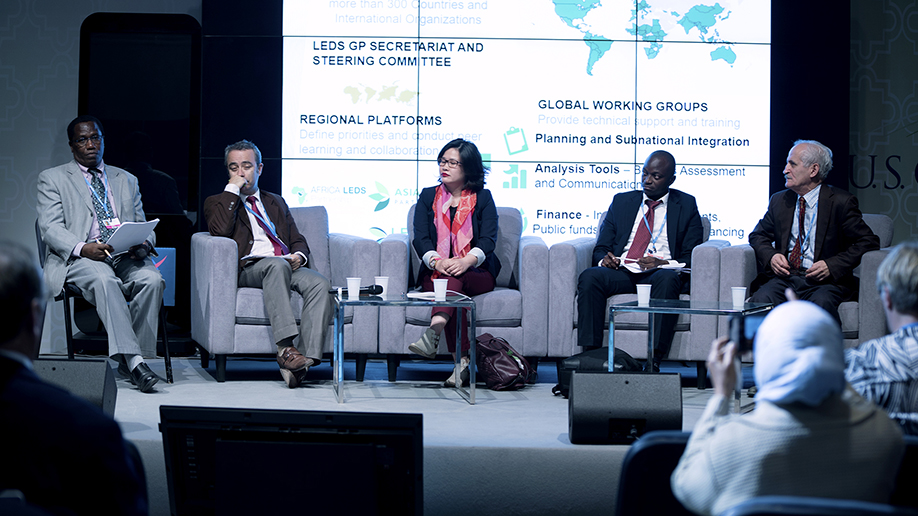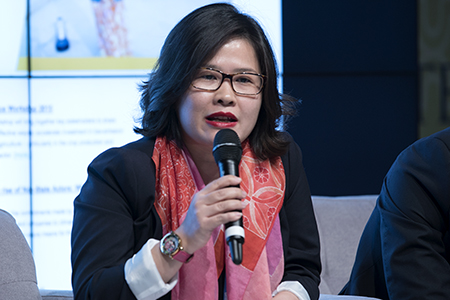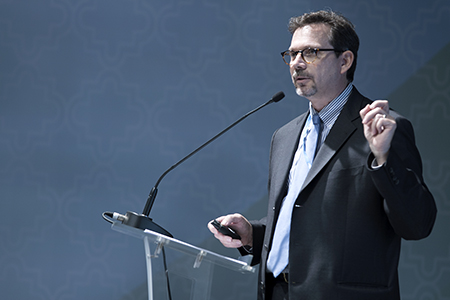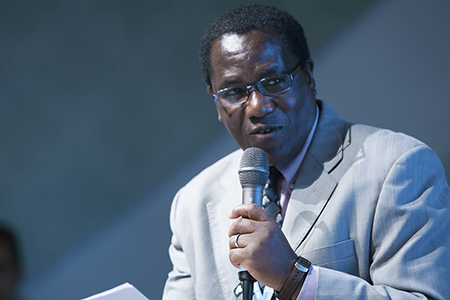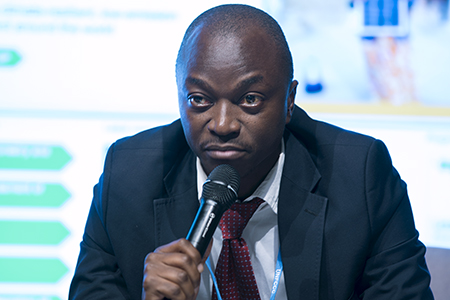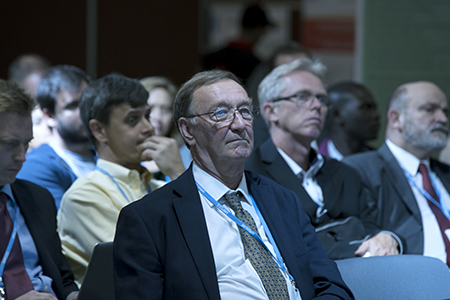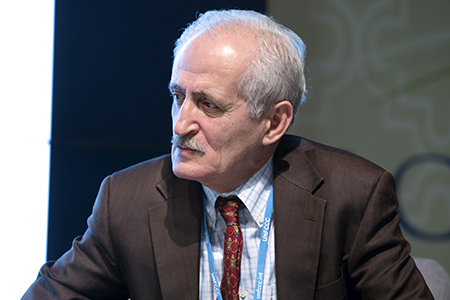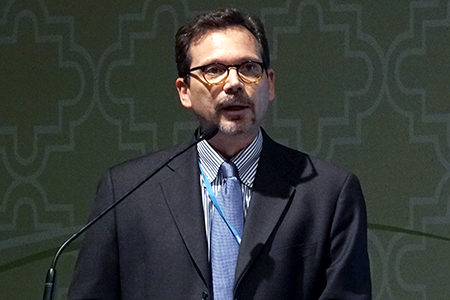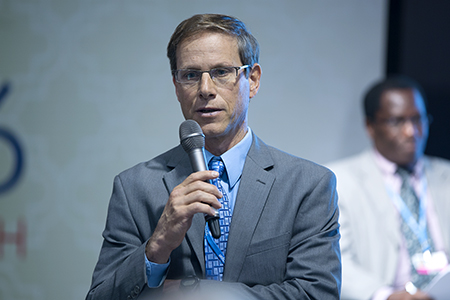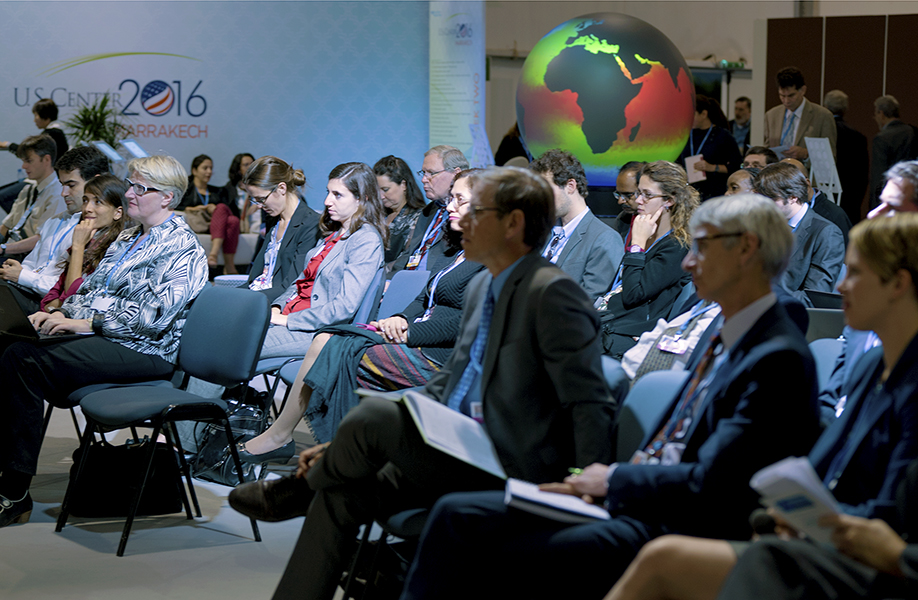Summary
IISD Reporting Services, through its ENB+ meeting coverage, has provided digital coverage of selected U.S. Center events every day, during the Marrakech Climate Change Conference - November 2016.
The following side events were covered on Friday, 11 November 2016:
- The Melting Arctic: A Glimpse into the Future of Global Climate Change
- Low-Emissions Development Strategies (LEDS) Global Partnership: Advancing Country Leadership on NDC Action
Photos by IISD/ENB | Liz Rubin
For photo reprint permissions, please follow instructions at our Attribution Regulations for Meeting Photo Usage Page
The Melting Arctic: A Glimpse into the Future of Global Climate Change
Presented by the US Department of State
This event, moderated by Philip Duffy, Woods Hole Research Center, explored current scientific research on climate change and the Arctic, including the role of climate change in the Arctic on worldwide weather and weather extremes. Duffy emphasized that the Arctic is warming twice as fast as the planet as a whole.
John Reager, National Aeronautic and Space Administration (NASA), presented on the tools and data set used by NASA to better understand climate change science. Noting that the US presently has 25 space observation stations, he demonstrated the changes in global temperature, Arctic sea-ice thickness and extent. He explained that ice sheets can contribute to abrupt, non-linear sea level changes.
David Weindorf, Texas Tech, showed a preview of a film, titled ‘Between Earth and Sky,’ on the melting of the Arctic, debuting in early 2017. He said that the film will include interviews with top scientists and expressed hope that it will raise awareness of the dire consequences of climate change impacts in the Arctic and to other parts and communities of the world.
Stephen Vavrus, University of Wisconsin, said that permafrost thawing will have “stunning” impacts on infrastructure and coastal erosion in the Arctic. Predicting that walrus haulout on Alaskan beaches may become more common, he explained how the disruption of atmospheric circulation patterns can bring about higher frequencies of extreme weather.
Karen Florini, US Department of State, outlined her discussion on: elevating the priority of Arctic climate change policy; mitigating climate change; building resistance; and strengthening science. Specifically on the latest scientific knowledge of the Arctic cryosphere, she drew attention to the recent science report on Snow, Water, Ice and Permafrost in the Arctic (SWIPA). She explained that reducing black carbon and methane emissions can have significant co-benefits on human health in the near and medium term. She referenced priority sectors suggested to the Arctic Council, such as on: black carbon; oil gas flaring; and methane in waste management.
During discussions, participants addressed, inter alia: the role of NASA as a data provider for scientists and policy makers; the importance of continuity of scientific missions and effective science communication to the general public; and precisely predicting the first ice-free arctic summer.
David Weindorf, Texas Tech, expressed hope that the debut in 2017 of the film ‘Between Earth and Sky’ will raise awareness about the impacts of climate change in the Arctic and elsewhere.
Stephen Vavrus, University of Wisconsin, underscored that the impacts of climate change on the Arctic are already being felt now.
Moderator Philip Duffy, Woods Hole Research Center
Drawing on data from the Soil Moisture Active Passive (SMAP) Radar, John Reager, NASA, showed that soils will thaw earlier in the northern atmosphere.
A participant asks a question to the panel.
Karen Florini, US Department of State, reiterated that what happens in the Arctic does not stay in the Arctic.
Participants during the event
Contact:
-
Stephen Vavrus (Coordinator), University of Wisconsin
| sjvavrus@wisc.edu
More Information:
Low-Emissions Development Strategies (LEDS) Global Partnership: Advancing Country Leadership on NDC Action
Presented by the National Renewable Energy Laboratory (NREL)
This event, moderated by Stephen King’uyu, Ministry of Environment & Natural Resources, Kenya, explored climate-resilient low-emission development and Nationally Determined Contributions (NDCs) implementation via technical collaboration.
Noting that the Low-Emissions Development Strategy Global Partnership (LEDS GP) catalyzes action across 300 countries and international organizations, Steve Hammer, World Bank, announced the recent establishment of LEDS GP’s fourth regional office in Eastern Europe and Eurasia.
Fernando Farias, Ministry of the Environment, Chile, drew attention to activities organized by LED GPs’s regional platform in Latin America and the Caribbean (LAC). He drew attention to the LED GP’s latest regional workshop in Panama, held in September 2016, and discussed technical cooperation in LAC on climate mitigation and adaption. He mentioned that the fortnightly LEDS LAC webinars have become one of the most popular services provided by the platform.
Nguyen Thi Dieu Trinh, Ministry of Planning and Investment, Viet Nam, drew attention to Viet Nam’s Climate Change Strategy and its Green Growth Strategy of 2012.
Richemonde Assie, Ministry of Environment, Côte d’Ivoire, listed priorities for LEDS in Africa such as: innovation action in mitigation; improving access to electricity by only renewable energy; and low-emission strategies.
Teimuraz Murgulia, Ministry of Environment and Natural Resources Protection, Georgia, highlighted the establishment of an emission baseline in his country. He announced that his country has committed to a 15 reduction in emissions from its baseline and a 25% reduction conditional on financial and technical support. He drew attention to the importance of support from the US Agency for International Development (USAID) to his country’s LEDS coordination committee, which is composed of officials from across government departments.
During discussions, participants discussed, inter alia: recognition that NDCs are addressing not only energy but, increasingly, also waste and forestry; and the importance of connecting technical advice from LEDS regional platforms to national coordinating committees composed of technical and political experts.
Panel (L-R): Stephen King’uyu, Ministry of Environment & Natural Resources, Kenya; Fernando Farias, Ministry of Environment, Chile; Nguyen Thi Dieu Trinh, Ministry of Planning and Investment of Vietnam; Richemonde Assie, Ministry of Environment of Côte d’Ivoire; and Teimuraz Murgula, Ministry of Environment and Natural Resources Protection, Georgia
Nguyen Thi Dieu Trinh, Ministry of Planning and Investment, Viet Nam, noted that the Climate Finance Task Force is looking at how to implement Viet Nam’s Low-Carbon Strategy.
Steve Hammer, World Bank, announced the establishment of the NDC Partnership in 2016 to provide access to and support coordination of political level dialogues, and access to knowledge products.
Stephen King’uyu, Ministry of Environment & Natural Resources, Kenya
Richemonde Assie, Ministry of Environment, Côte d’Ivoire, stressed the importance of raising awareness of LEDS to high-level decision makers in ministries at both national and regional levels.
Participant listening to panelists
Teimuraz Murgula, Ministry of Environment and Natural Resources Protection, Georgia, drew attention to the importance of USAID’s support to his country’s LEDS coordination committee.
Participants during the event
Contact:
-
Stephen King’uyu (Moderator), University of Wisconsin
| stephen.kinguyu@gmail.com


